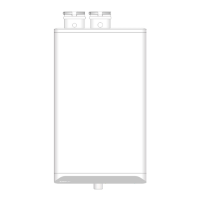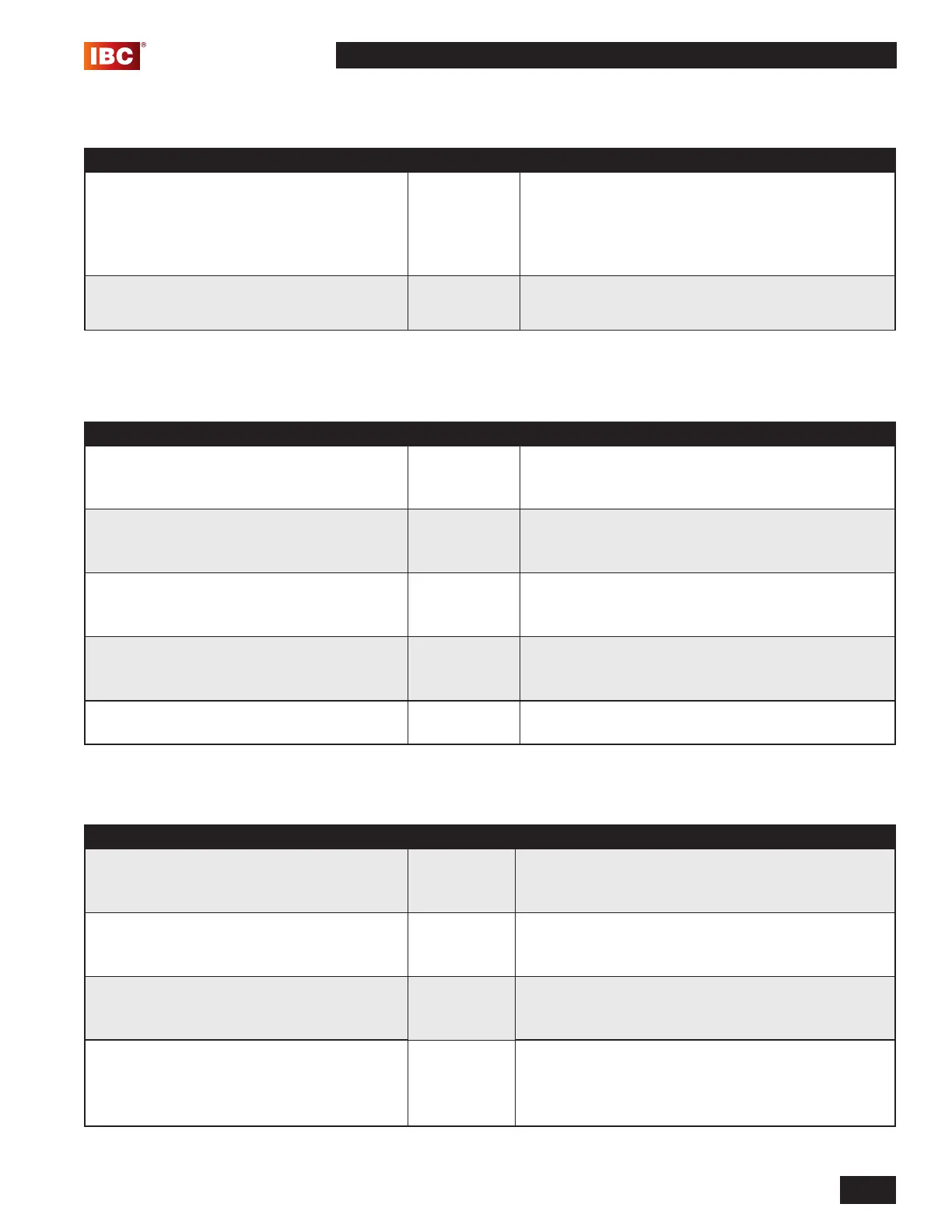5-9
TROUBLESHOOTING
SFC BOILER / WATER HEATERS - SFC 199
5.4.3 Central heating system remains too warm
POSSIBLE CAUSES ANALYSIS POSSIBLE SOLUTION
Room thermostat / weather-dependent
control is defective or has
a short circuit.
→ Yes
↓No
• Check the wiring.
Check the OpenTherm, On/Off connection of the unit, or
room thermostat. Replace the thermostat.
• Replace the weather-dependent control.
There is thermo-siphon in the central
heating circuit.
→ Yes Place a check valve (in the case of thermo-siphon) or a
two-way valve (if there is a second pump in the central
heating circuit).
5.4.4 No domestic hot water (DHW)
POSSIBLE CAUSES ANALYSIS POSSIBLE SOLUTION
The power LED is not shown. → Yes
↓No
• Check the power supply.
• Check the fuse (see electrical schematic).
Flow sensor does not work. → Yes
↓No
Replace the ow sensor.
Domestic hot water ow < 0.5 gpm → Yes
↓No
Increase the domestic hot water ow.
Domestic hot water sensor S3 is
defective.
→ Yes
↓No
Replace the domestic hot water sensor S3.
No electricity on the ow sensor (5V
DC).
→ Yes Check the wiring according to the schematic. CK THE
WIRING ACCORDING TO THE SCHEMATIC.
5.4.5 Domestic hot tap water does not reach the correct temperature
POSSIBLE CAUSES ANALYSIS POSSIBLE SOLUTION
Domestic hot water ow is too high. → Yes
↓No
Reduce the domestic hot water ow.
Setting for domestic hot water
temperature is too low.
→ Yes
↓No
Increase the domestic hot water temperature.
Insufcient heat transfer due to calcium or
contamination in the domestic hot water-sided
central heating unit.
→ Yes
↓No
De-calcify or ush the domestic hot water-sided central
heating unit.
The central heating system becomes
warm while tapping water.
→ Yes
↓No
Undesirable circulation during domestic hot water demand
in the central heating circuit due to thermo-siphon of the
second pump in the central heating circuit. Place a check
valve (in the case of thermo-siphon) or a two-way valve (if
there is a second pump).

